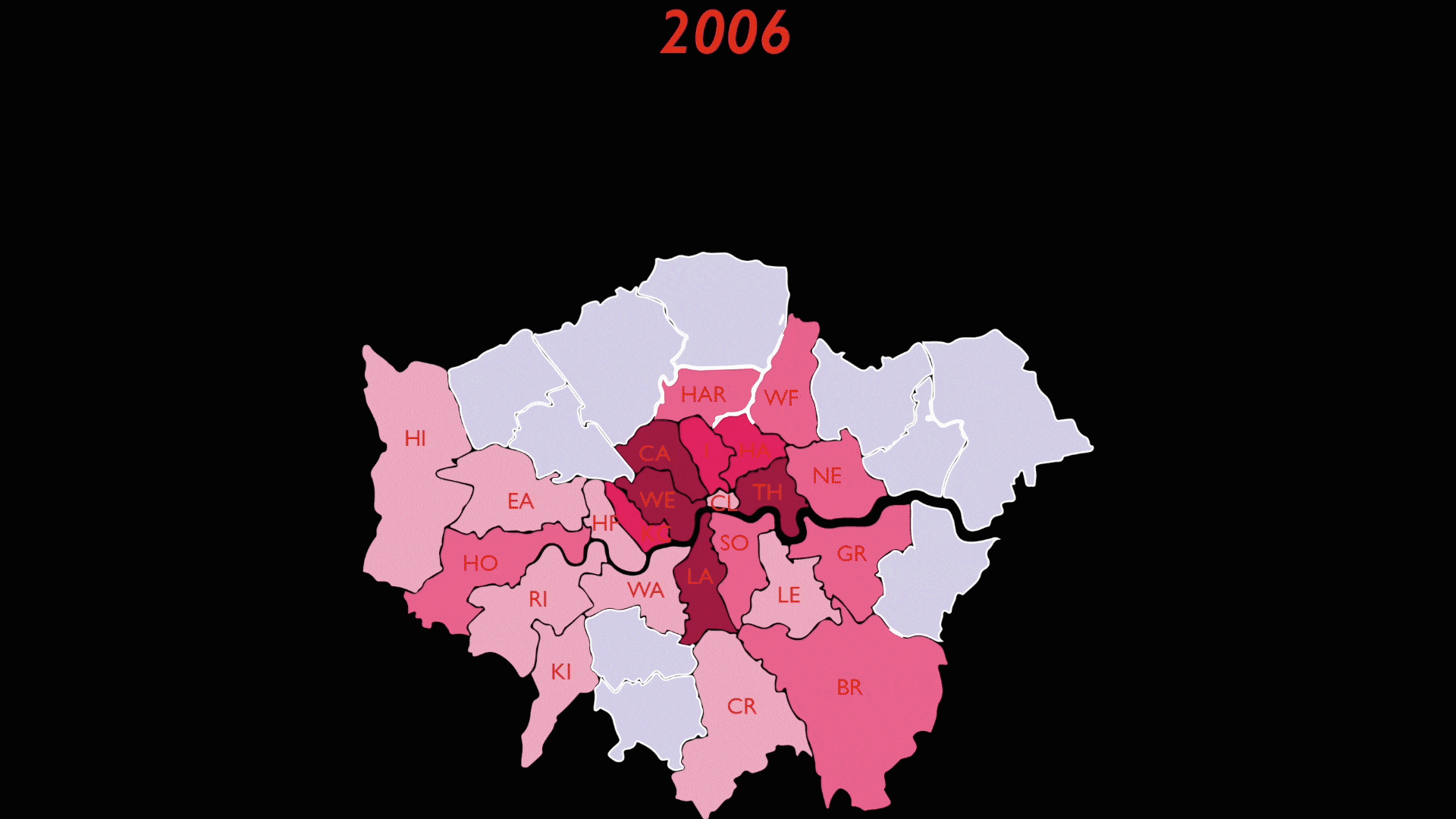London has been losing its LGBTQ+ establishments in a rapid rate the last 10 years, due to the gentrification bullet and the rise of online dating apps.
The Issue
London, a city credited as the most progressive on Earth, has been losing its LGBTQ+ establishments due to the menacing forces of gentrification and the rise of online dating apps. A recent study by UCL’s Urban laboratory department, conducted by Ben Campkin and Laura Marshall, has shown that London has lost 58% of its LGBTQ+ venues in the last decade, with councils like Tower Hamlets losing 70% of those premises. Ever since, queer expression has been moving from the dance-floor to secluded high-rise apartments , away from the public eye. The latest victim in a macabre list of closures is XXL, a men's only nightclub that catered to London’s bear and leather communities. Although controversial because of its strict door policy that rejected any visible signs of femininity, it held a special place in London’s gay scene as the last remaining super club equipped with a labyrinthine darkroom. XXL was a space where gay men could freely perform a hyper-masculine and sinister identity, and it counted 100.000 active members. In the case of Joiners Arms, a celebrated LGBTQ+ pub in East London that shut its doors in 2015, a local activist group has been campaigning against its closure and succeeded in securing certain protections. But the gap in the queer heart of London remains.
Narrative model - ‘London with its allegorical fortifications’
Extract from the narrative
“The year is 2020. Divine III, the author’s drag alter ego, responds to mayor’s pro LGBTQ+ 2018 manifesto and replaces it with a new radical plan that places Strawberry Hill at the heart of its development strategy.
Much like Horace, who built a castle to protect his queer identity from the world, fortifications will be built around London, to protect the island from the outside forces that threaten its very existence. Fortifications act as a metaphor for the necessary planning changes and policies that must be put in place by city-makers.”
MAYORS LGBTQ+ PLAN 2018
Mayor’s LGBT+ Venue Charter
1. A visible rainbow flag should be displayed on the outside of the venue. The rainbow flag is a universal symbol of the LGBT+ community. The symbol could be displayed as an actual flag or alternatively a sign, sticker or other physical signifier.
2. The venue should be marketed as an LGBT+ venue. This will be an integral part of the venue’s business plan. Marketing needs to effectively reach the LGBT+ community e.g. through social media, print and digital journals, blogs and other relevant websites. Many LGBT+ venues display LGBT+ magazines/literature/posters in the venue itself. Venues will engage in community outreach, such as hosting events around significant dates like Pride.
3. The venue will provide a welcoming, accessible and safe environment for all. The venue will welcome anyone regardless of background or identity, religion, race/ethnicity, gender identity or expression, disability, age or sexual orientation. The venue will be accessible to disabled people, in line with legislation. The management will consider adopting gender neutral toilets. Stonewall has published guidance on this.
4. Management and staff should be LGBT+ friendly. Door and bar staff will create a welcoming and safe environment. Door and bar staff will be LGBT+ friendly. There are LGBT+ friendly security firms in London who provide licensed security staff (many of whom are LGBT+ individuals themselves). There are also relevant training providers.
5. Programming should be LGBT+ focused. Where the venue programmes regular entertainment, this should be principally LGBT+ focused.
Divine delivers her radical new plan for Queer London to the Mayor Sadiq Khan, Night Czar Amy Lame and the ghost of Horace Walpole . Digital illustration, author’s own




